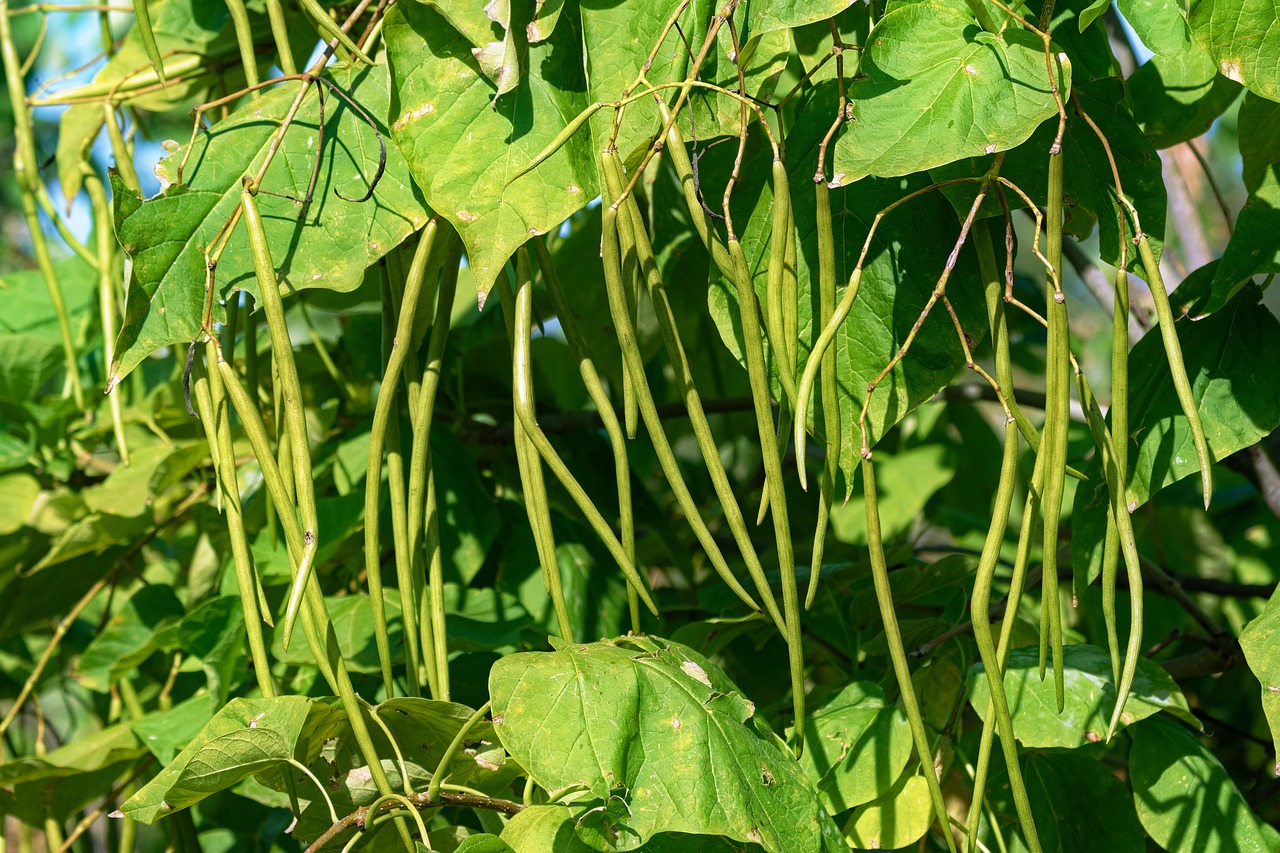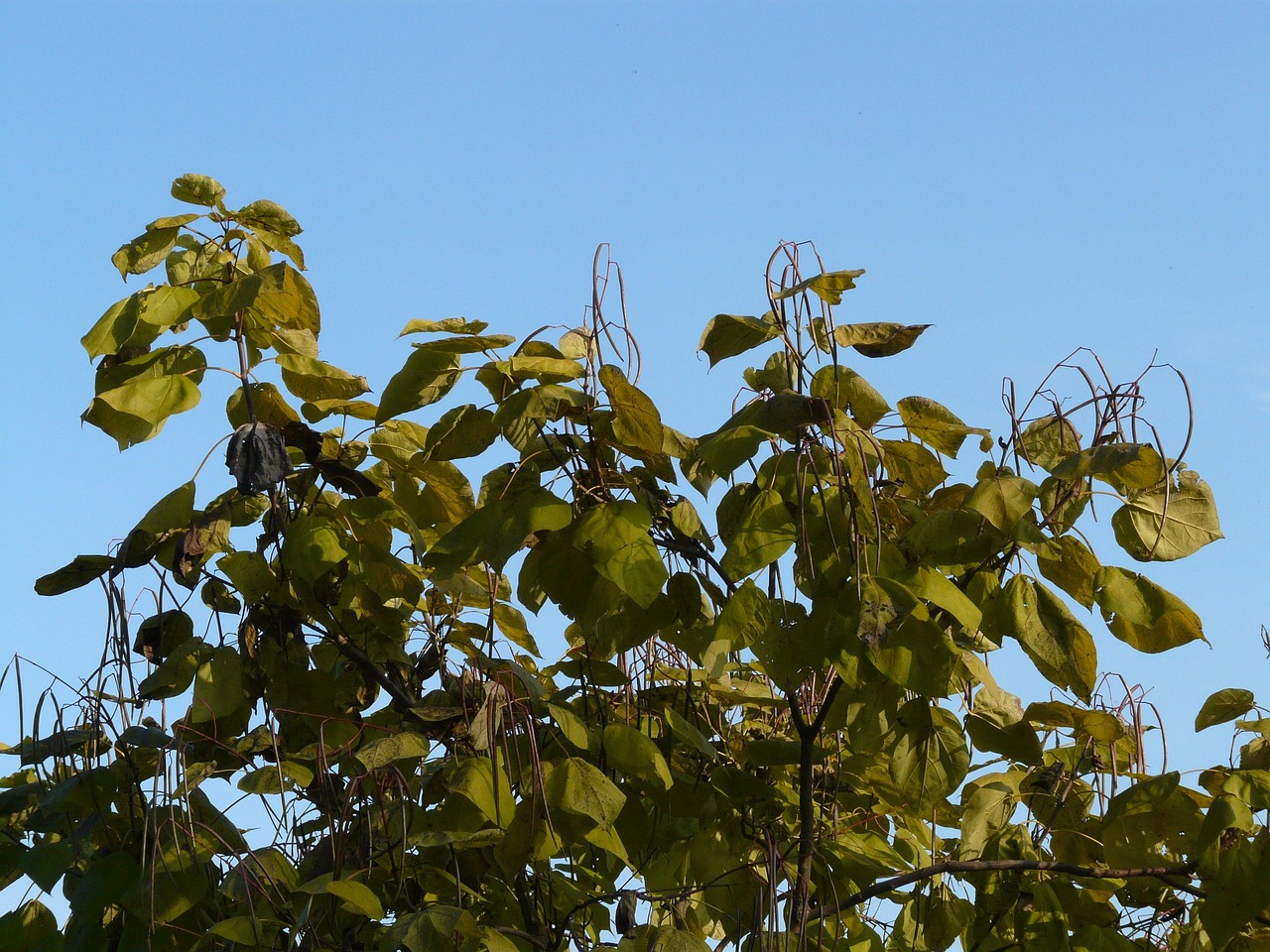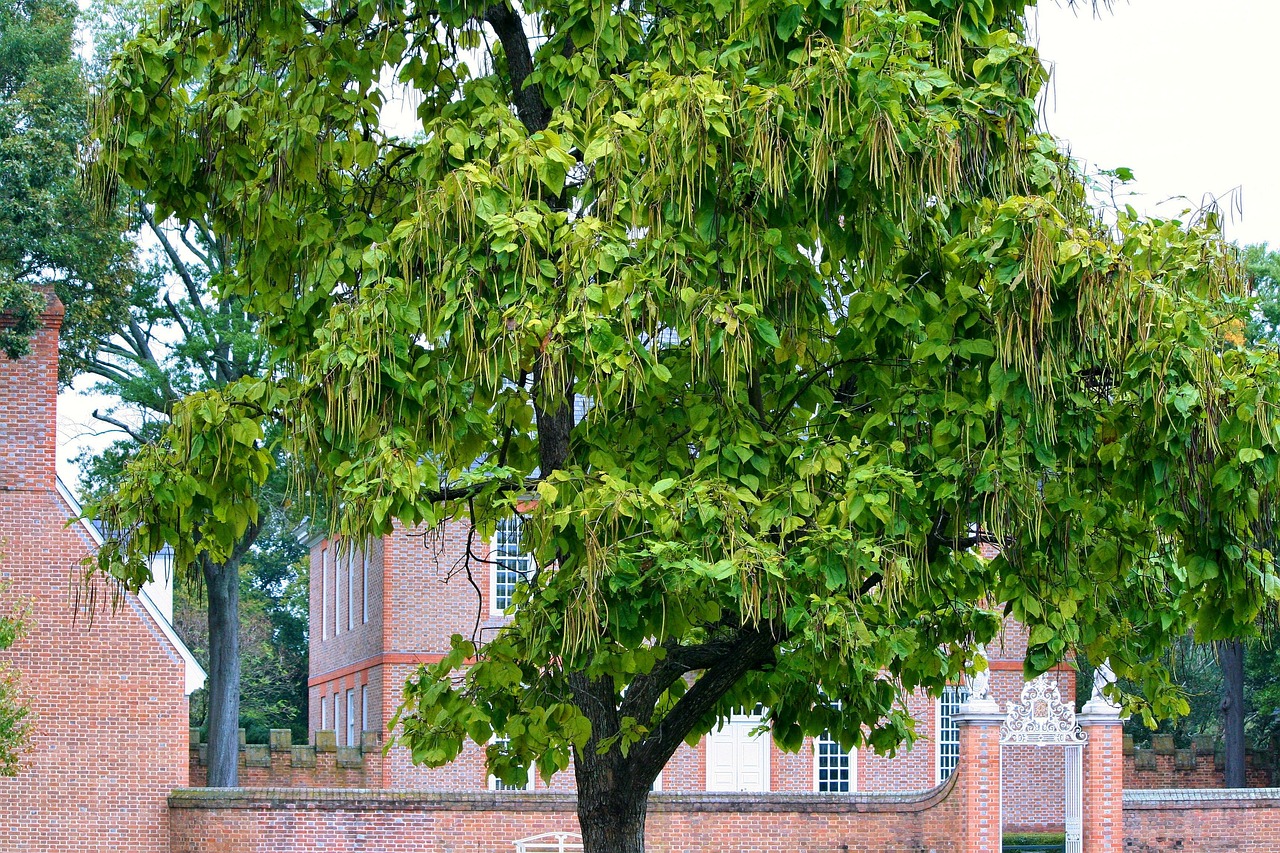The Catalpa tree is known for its rapid growth rate, typically reaching 10 to 20 feet in just a few years. This fast growth makes it an excellent choice for providing shade and quick cover in landscapes.
Catalpa trees, also referred to as “catalpa bignonioides,” are deciduous trees native to North America and parts of the Caribbean. They are well-loved for their large, heart-shaped leaves and stunning white flowers that bloom in late spring. With their broad canopies, these trees provide ample shade, making them popular in parks and residential gardens.

One of the most appealing features of the Catalpa tree is its growth rate. Under optimal conditions, they can grow between 3 to 5 feet per year. This rapid growth allows them to quickly establish themselves in a landscape, offering shade and cover in a relatively short time frame. Their adaptability to various soil types and climates further contributes to their popularity as a landscaping choice.
Growth Rate Factors
Several factors influence the growth rate of Catalpa trees. Understanding these factors can help you maximize their potential in your garden or landscape. Below are key elements that affect how quickly these trees grow:
- Soil Quality: Catalpa trees thrive in well-draining, fertile soils. Poor soil conditions can stunt their growth.
- Water Availability: Adequate water is crucial for young trees. Regular watering, especially during dry spells, supports healthy growth.
- Sunlight: These trees prefer full sun exposure. Adequate sunlight helps in faster photosynthesis and growth.
- Temperature: Catalpa trees flourish in warm climates. Extreme cold can hinder their growth.
- Pests and Diseases: Healthy trees are more likely to grow quickly. Infestations or diseases can slow down their development.
When considering planting a Catalpa tree, it is essential to select a location that meets these requirements to ensure optimal growth. Additionally, proper care during the early years will support faster establishment and robust growth.

Ideal Growing Conditions
Catalpa trees are adaptable but have specific conditions under which they grow best. Knowing these ideal conditions can help ensure your tree reaches its maximum height and provides the desired shade. Below is a breakdown of the preferred growing conditions:
| Condition | Ideal Range |
|---|---|
| Soil pH | 6.0 to 7.5 |
| Sunlight | Full sun (at least 6 hours per day) |
| Watering Frequency | Weekly during dry periods |
| Temperature | 60°F to 85°F (optimal growth) |
In addition to these conditions, regular maintenance is essential for promoting healthy growth. This includes pruning to remove any dead or diseased branches and ensuring that the tree receives appropriate nutrients through fertilization.
Catalpa trees not only grow quickly but also have an aesthetic appeal that enhances any landscape. Their large leaves provide excellent shade, making them ideal for use around patios, decks, or other outdoor spaces where people gather. Furthermore, their unique flowering pattern attracts pollinators, adding ecological value to your garden.

Overall, understanding the growth rate and ideal conditions for Catalpa trees can help you make informed choices for landscaping projects. Whether you want to establish quick shade or enhance your garden’s beauty, these trees offer both functionality and visual appeal.
Planting Catalpa Trees
Successful growth of Catalpa trees begins with proper planting techniques. Choosing the right time and method for planting will significantly affect the tree’s establishment and growth rate. Here are key considerations for planting Catalpa trees:
Timing
The best time to plant Catalpa trees is during the early spring or fall. During these seasons, the weather is mild, which helps reduce stress on the tree as it establishes roots. Planting in these periods allows the tree to benefit from natural rainfall and cooler temperatures.

Site Preparation
Before planting, it’s crucial to prepare the site adequately. Follow these steps for optimal results:
- Choose a Location: Select a site that receives full sun and has well-draining soil.
- Clear the Area: Remove any weeds, grass, or debris from the planting area.
- Test Soil: Conduct a soil test to determine pH and nutrient levels. Amend the soil as needed.
- Dig a Hole: Dig a hole that is twice as wide and just as deep as the tree’s root ball.
Planting Procedure
Once the site is prepared, follow these steps to plant your Catalpa tree:
- Position the Tree: Place the tree in the center of the hole, ensuring that the top of the root ball is level with the surrounding soil.
- Fill the Hole: Backfill with soil, gently packing it down to eliminate air pockets.
- Water Thoroughly: Give the tree a deep watering immediately after planting to help settle the soil around the roots.
- Add Mulch: Apply a layer of mulch around the base to retain moisture and suppress weeds.
Catalpa Tree Care
Caring for your Catalpa tree after planting is essential for promoting healthy growth and longevity. Proper care includes watering, fertilization, pruning, and monitoring for pests and diseases.
Watering
Newly planted Catalpa trees require consistent moisture to establish strong roots. Here are some tips for effective watering:
- Frequency: Water every week during dry spells. Ensure the soil remains moist but not soggy.
- Deep Watering: Water deeply to encourage roots to grow downwards.
- Adjust for Rainfall: Reduce watering frequency during rainy periods.
Fertilization
Fertilizing Catalpa trees helps support their rapid growth. Here’s how to effectively fertilize:
- Timing: Fertilize in early spring as new growth begins.
- Type of Fertilizer: Use a balanced, slow-release fertilizer suitable for trees.
- Application Rate: Follow package instructions for proper dosage based on tree size.
Pruning
Regular pruning helps maintain the shape and health of Catalpa trees. Consider these pruning tips:
- Timing: Prune in late winter or early spring before new growth starts.
- Pest and Disease Management: Remove dead or diseased branches promptly.
- Shape Maintenance: Trim branches to encourage a balanced canopy and prevent overcrowding.
Pests and Diseases
Catalpa trees can be susceptible to certain pests and diseases. Awareness and early intervention can help protect your tree. Common issues include:
- Caterpillars: These pests can defoliate leaves. Hand-picking or using insecticidal soap can control them.
- Canker Diseases: Look for wilting branches or bark lesions. Remove affected areas immediately.
- Aphids: These small insects can weaken trees by sucking sap. Introducing ladybugs can help control their population.
By understanding how to plant and care for your Catalpa tree, you can ensure it thrives and fulfills its role as a fast-growing shade provider in your landscape. Regular attention to its needs will promote healthy growth and robust beauty.
Environmental Benefits of Catalpa Trees
Catalpa trees are not only valued for their rapid growth and aesthetic appeal, but they also provide several environmental benefits. Incorporating these trees into your landscape can positively impact local ecosystems and contribute to a healthier environment.
Air Quality Improvement
One of the most significant advantages of planting Catalpa trees is their ability to improve air quality. Trees play a crucial role in filtering pollutants from the air. Here are some ways Catalpa trees enhance air quality:
- Carbon Sequestration: Catalpa trees absorb carbon dioxide, a major greenhouse gas, and store carbon in their biomass.
- Oxygen Production: Through photosynthesis, these trees release oxygen, improving air quality for both humans and wildlife.
- Pollution Filtration: The large leaves trap dust, pollen, and other airborne pollutants, reducing their presence in the atmosphere.
Soil Erosion Prevention
The extensive root system of Catalpa trees helps prevent soil erosion. This is particularly important in areas prone to heavy rainfall or where the soil is loose. The roots stabilize the ground, keeping it intact and reducing runoff. Here are ways Catalpa trees contribute to soil health:
- Soil Structure Improvement: Their roots create channels in the soil, enhancing its structure and aeration.
- Nutrient Cycling: Fallen leaves decompose and return vital nutrients to the soil, enriching it for other plants.
- Water Retention: The presence of trees increases soil moisture retention, benefiting other vegetation nearby.
Biodiversity Support
Catalpa trees attract various wildlife species, contributing to local biodiversity. The flowers and foliage provide food and habitat for many creatures. Consider the following benefits:
- Pollinator Attraction: The fragrant flowers attract bees, butterflies, and other pollinators, essential for maintaining healthy ecosystems.
- Bird Habitat: Birds often nest in the dense foliage, finding shelter and food among the leaves and branches.
- Insect Diversity: A variety of insects feed on Catalpa leaves, supporting a complex food web in the surrounding area.
Catalpa Trees in Urban Landscapes
Catalpa trees are ideal for urban environments due to their fast growth rate and adaptability. They provide numerous advantages in city landscapes. Here are some key aspects of their role in urban settings:
Shade Provision
Urban heat islands are common in cities where concrete and asphalt absorb and retain heat. Catalpa trees provide much-needed shade, helping to lower temperatures in these areas. This shade has multiple benefits:
- Energy Conservation: Shade from Catalpa trees can reduce cooling costs for buildings by lowering ambient temperatures.
- Comfortable Outdoor Spaces: Parks and recreational areas with Catalpa trees offer cooler environments for residents and visitors.
- Aesthetic Improvement: Beautifully landscaped areas with trees enhance the visual appeal of urban spaces.
Noise Reduction
Trees can act as natural sound barriers. The dense foliage of Catalpa trees absorbs sound, making them effective at reducing noise pollution in urban areas. This is particularly beneficial near busy streets or commercial areas:
- Buffer Zones: Planting Catalpa trees along roadsides can create buffers that diminish traffic noise.
- Enhanced Privacy: Dense canopies can help shield homes from noise while also providing an element of privacy.
Catalpa Trees as Landscape Features
The unique characteristics of Catalpa trees make them excellent focal points in various landscaping designs. Their large leaves and beautiful flowers create visual interest throughout the seasons.
Design Versatility
Catalpa trees can be incorporated into a variety of landscape designs. Here are some creative uses:
- Specimen Trees: Planted alone, they can serve as stunning focal points in gardens or parks.
- Shade Gardens: Use them to create shaded areas under which other shade-loving plants can thrive.
- Windbreaks: In larger landscapes, they can be used to create natural windbreaks that protect gardens from harsh winds.
Seasonal Interest
Catalpa trees provide year-round interest with their changing appearances through the seasons:
- Summer Foliage: The large green leaves create a lush canopy during the warmer months.
- Spring Blooms: Beautiful white flowers appear in late spring, attracting pollinators.
- Fall Color: In autumn, their leaves turn yellow before falling, adding seasonal color to the landscape.
Integrating Catalpa trees into your landscape design not only enhances aesthetics but also contributes positively to the environment and community well-being.
Climate Considerations for Catalpa Trees
When considering the planting and growth of Catalpa trees, it is essential to account for climate conditions. These trees flourish in a range of environments but have preferences that can significantly influence their growth rate and overall health.
Hardiness Zones
Catalpa trees are best suited for USDA Hardiness Zones 4 to 9. Understanding these zones is crucial for gardeners and landscapers when selecting the appropriate species and planning their cultivation. Here’s a brief overview of climate considerations:
- Zone 4: Catalpa trees can survive harsh winters, but growth may be slower in extremely cold conditions.
- Zone 5: Ideal for robust growth, providing a balance of warmth and moisture.
- Zone 6 to 9: Optimal conditions for Catalpa trees, with warm temperatures promoting rapid growth and flowering.
Adapting to Local Conditions
Catalpa trees are adaptable to various soil types, including sandy and clay soils, as long as there is good drainage. However, they thrive best in loamy, well-drained soils rich in organic matter. Here are some tips on adapting to local conditions:
- Soil Amendments: Adding organic compost can improve soil structure and nutrient content.
- Mulching: Applying mulch around the base helps retain moisture and regulate soil temperature.
- Water Management: Adjusting watering practices based on local rainfall patterns will help prevent root rot or drought stress.
Catalpa Trees and Wildlife Interaction
The presence of Catalpa trees in your landscape can create a thriving ecosystem that benefits various wildlife species. Their flowers, leaves, and seeds are integral to the local food web.
Attracting Beneficial Insects
Catalpa trees provide habitat and nourishment for beneficial insects, such as:
- Bees: The flowering period attracts bees, aiding in pollination for other plants in the vicinity.
- Butterflies: Many butterfly species are drawn to the blooms, contributing to biodiversity.
- Ladybugs: They are attracted to the aphids that may inhabit the tree, helping control pest populations naturally.
Providing Habitat for Birds and Small Animals
The dense foliage of Catalpa trees offers shelter and nesting sites for birds and small mammals. Additionally, the seeds produced by the tree can serve as a food source. Here are some species that benefit:
- Songbirds: Various songbirds use Catalpa trees for nesting due to their protective canopy.
- Squirrels: These small mammals often forage for seeds and find shelter among the branches.
- Pollinators: Various insects flourish in environments rich in flowering plants like Catalpas.
Final Thoughts
Catalpa trees stand out as an exceptional choice for those looking to enhance their landscapes with quick-growing shade and ecological benefits. Their impressive growth rate, adaptability, and aesthetic appeal make them suitable for various applications, from urban settings to rural gardens.
The environmental advantages they provide, including air quality improvement, soil stabilization, and biodiversity support, further cement their value in any landscaping project. As you consider incorporating Catalpa trees into your space, remember the importance of proper planting and care techniques to maximize their growth potential and longevity.
With their ability to thrive in diverse conditions, Catalpa trees not only serve as beautiful focal points but also contribute positively to the ecosystem. Whether you’re aiming to create a shaded retreat, attract wildlife, or improve air quality in your area, Catalpa trees offer a multifaceted solution that rewards both nature and the community.
In conclusion, embracing Catalpa trees in your landscaping efforts is a step toward fostering a more vibrant and sustainable environment. By understanding their growth habits and care requirements, you can ensure these magnificent trees flourish and provide benefits for years to come.
